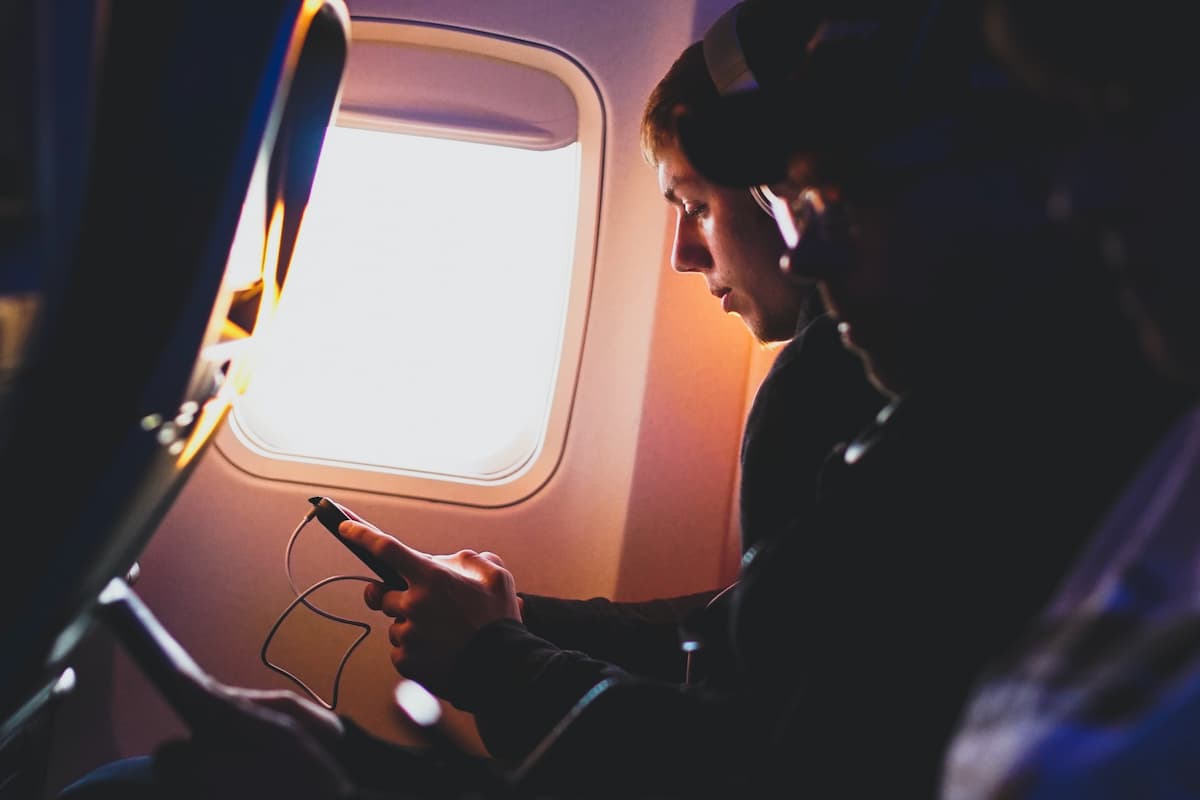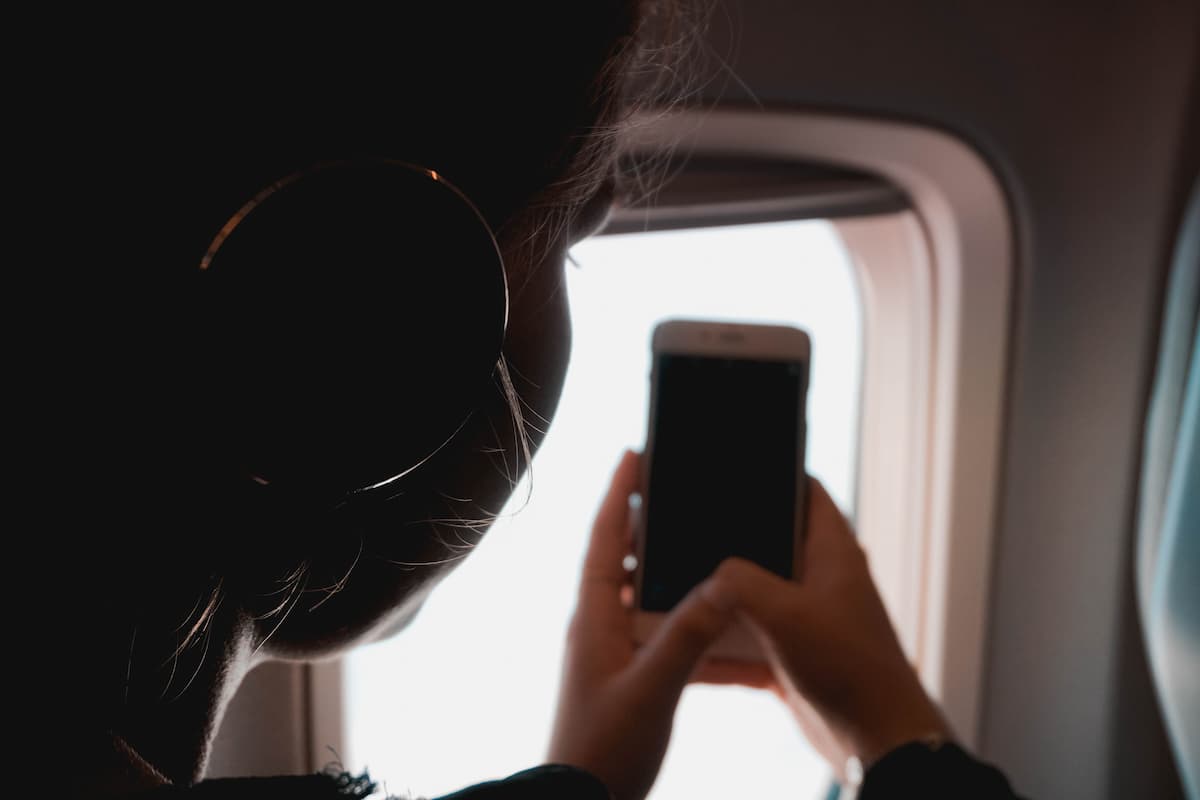Can You Use Your Phone On A Plane?
The US Federal Communications Commission (FCC) and Federal Aviation Administration (FAA) strictly regulate what kinds of electronics can and cannot be used during a flight.
Pretty much everyone has a cell phone, and while they’re handy little devices, they must be used properly when traveling on a plane.
In most cases, you can use a phone on a plane as long as it’s in airplane mode and not receiving cellular signals. You can play games, read ebooks, watch downloaded movies, etc. – as long as you’re not connected to a mobile network. Most airlines allow Bluetooth headphones to be on at all times, and once the aircraft reaches cruising altitude, you can access the airline’s pay-per-use wifi (if available).
This article explains why you can’t connect to your cell network on a plane, when you can use your device, and discusses the future of phones on commercial aircraft.
Why Can’t I Use My Cellular Network While on a Plane?

The FCC and the FAA have mandated that phones and other personal electronic devices (PEDs) cannot transmit or receive cellular signals while an aircraft is in flight.
Prior research has shown that cell signals (like phone calls and the data you use to surf the web) can interfere with essential communication or navigation equipment and disrupt telecommunications networks on the ground.
Just before takeoff, the flight crew will remind you to put your phone in airplane or flight mode, which disables all wireless transmissions, including wifi, Bluetooth, and your mobile network.
Depending on the aircraft, you can use non-cellular functions on your phone (i.e., Bluetooth and wifi), but the flight crew will tell you when to activate them safely.
For example, sometimes you can use Bluetooth/wifi before departure, but other times it won’t be until after takeoff.
Risk of Interference With Airplane Equipment
If you forget to turn on airplane mode, it’s unlikely your plane will fall from the sky.
However, the flight crew will insist you switch to airplane mode as phone signals can cause electromagnetic interference with the aircraft’s communications and navigation equipment.
The electronic systems in newer aircraft are built to mitigate these issues, but some airlines have older fleets that haven’t yet been upgraded.
If your phone is found to be transmitting signals that disrupt essential aircraft equipment, the flight crew will likely be able to isolate your device and ask you to turn it off.
Disruptions to Telecommunications Networks
Your phone has to connect to a nearby cell tower for you to use your mobile network.
As you move around, your phone will link with multiple towers, maintaining your connection.
However, in your daily life, you’ll only use the few towers in your local area – when you’re on a plane, your phone will try to connect to multiple sites simultaneously.
If everyone on your flight also sends out signals, it can overload the system and disrupt services on the ground.
When Can I Use My Phone On a Plane?
You can use your phone and other PEDs to connect to mobile networks while on the ground – either before takeoff or after landing.
Once in the air, you’ll have to be in airplane mode, but you can use Bluetooth and wifi functions if the airline permits it.
You can also use your phone to play games, read books, watch downloaded movies, etc.
As long as your phone isn’t connecting to a mobile network, you’re good to go.
Just note that the FCC and almost all commercial airlines worldwide prohibit voice calls while in the air.
The Future of Cell Phone Use on Planes

As aviation technology continues to advance, you’ll see more flexibility regarding cell phone use on planes.
For example, some airlines in the European Union provide in-flight cellular services, including text, data, and voice calls.
These planes use miniature mobile base stations called picocells, which connect to satellites and prevent phones from communicating with land-based networks.
The technology is already popular in business aviation across the US, but commercial flights are yet to adopt it.
The FCC and FAA are working with lawmakers to bring this technology to commercial airlines in the US, but there are no concrete plans for implementing the service.
Final Thoughts
Using a phone on a plane is usually no problem as long as it’s not receiving cellular signals.
Companies like Google, Apple, and Samsung know how much people love their devices, which is why all their phones have airplane mode.
Once your phone is in airplane mode, you can use it to play games, read ebooks, watch downloaded movies, etc. – or finally take the time to organize your photos.
Most airlines allow Bluetooth/wifi connections, especially once the plane is in the air, but confirm with the flight crew before activating these features.